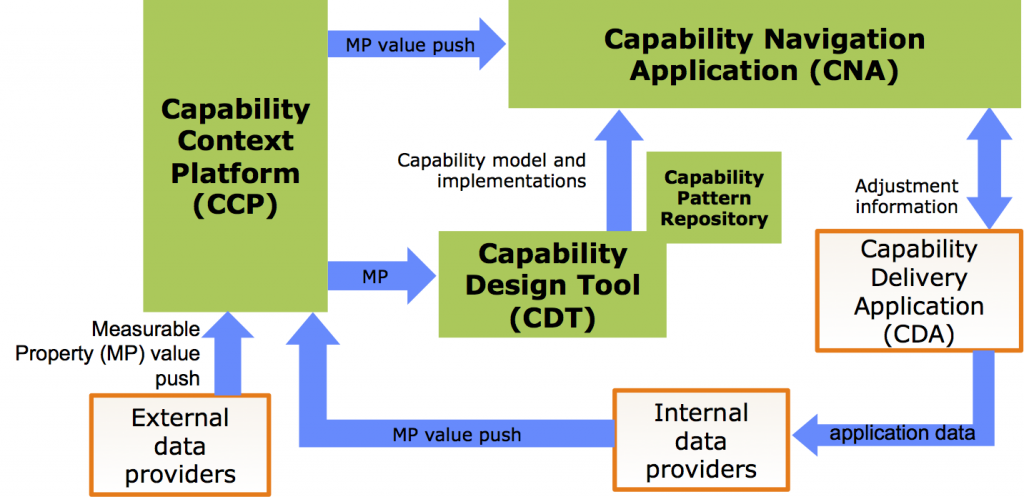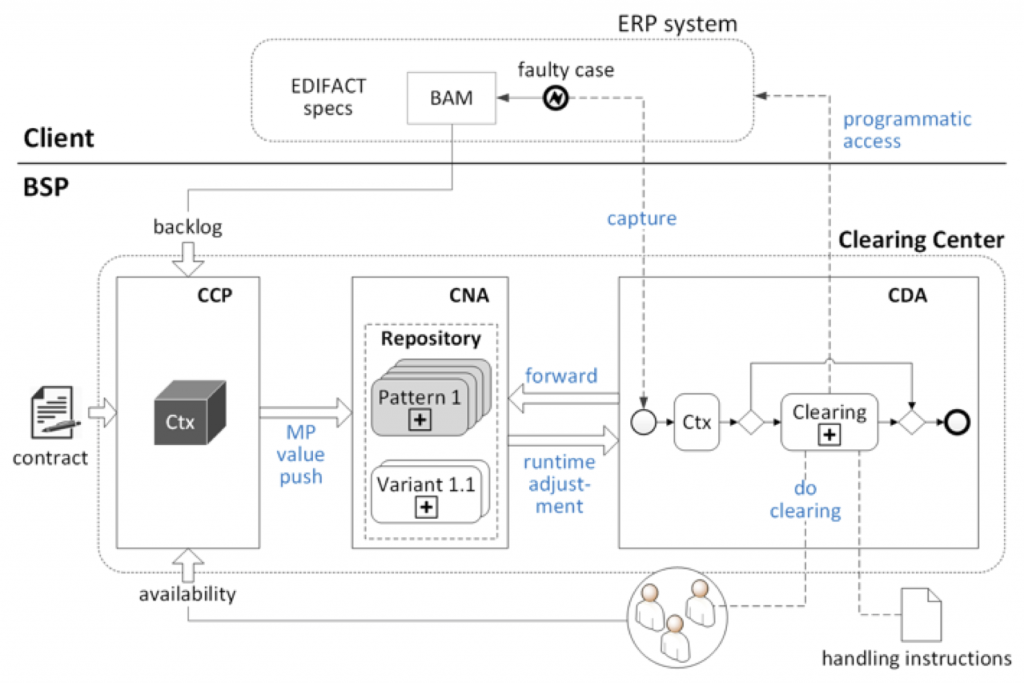Tool support
The CDD methodology is supported by the CDD environment consisting of the following key components:
- Capability Design Tool (CDT), an Eclipse based graphical modeling tool with a complete notation for Enterprise Modeling and Capability Design. CDT supports the creation of models (goal models, process models, concept models, context models, business processes and capability models) according to the capability meta-model. The CDT will provide to capability analysts a suitable set of tools for defining capabilities according to the best practices from the Enterprise Modelling domain.
- Capability Context Platform (CCP) is an application for aggregating and distributing context information from various kinds of sources, e.g. social networks, application data, and other.
- Capability Delivery Application (CDA) is an application used to deliver capabilities, developed and executed using the engineering process of capability owner/provider. In real case at runtime CDA can, for example, be an ERP system. This can be a custom-made system, or a configured standard system such as a SAP ERP.
- Capability Navigation Application (CNA) a web application that imports the capability models defined in the CDT in order to monitor the described context. CNA connects to the context platform to monitor the capability context, informs the capability analyst and business services manager about current KPIs and handles run-time capability adjustments. CNA retrieves the stored patterns from the pattern repository created in the CDT and according to them configures the CDA used for capability delivery. CNA monitors the performance of the CDA and selects the run-time capability adjustments by monitoring the capability context.
- Capability Pattern Repository (CPR) is a web application for documenting, storing, sharing, and monitoring patterns for capability design and delivery. The patterns are available here.

Example of how the CDD Environment is configured at run-time at SIV is shown in figure below; full description is given in deliverable D4.2 Capability models for SOA technological platforms, section 2.1
